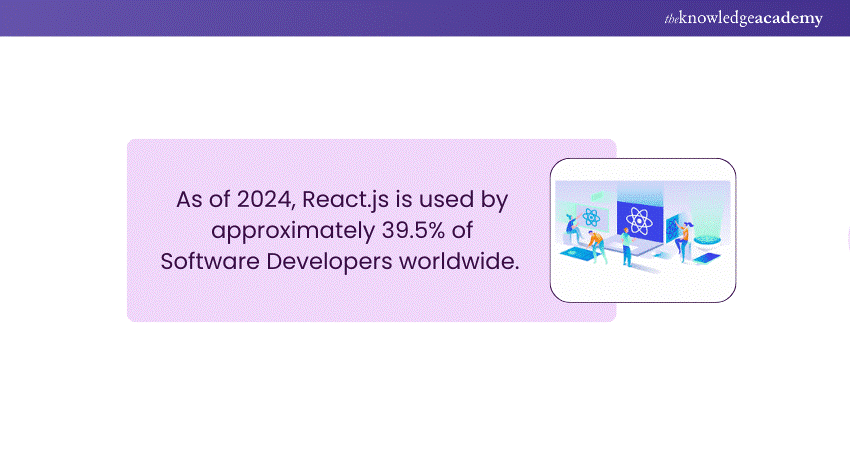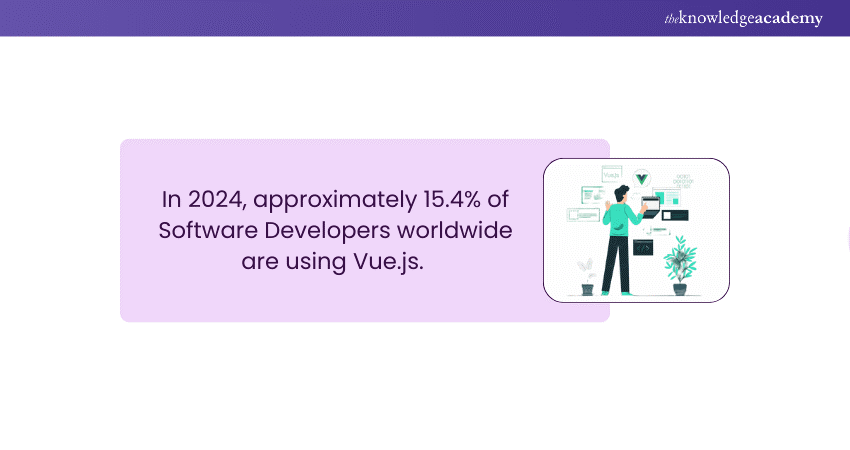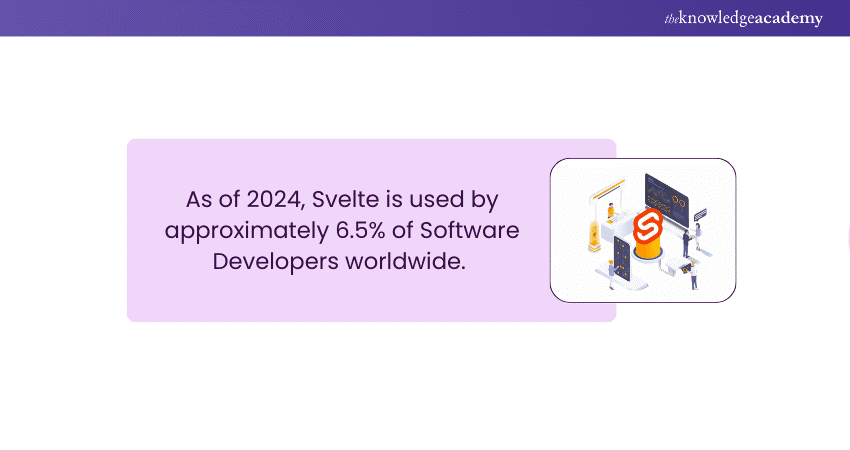We may not have the course you’re looking for. If you enquire or give us a call on +40 316317743 and speak to our training experts, we may still be able to help with your training requirements.
Training Outcomes Within Your Budget!
We ensure quality, budget-alignment, and timely delivery by our expert instructors.

Have you ever wondered what makes your favourite websites and applications look and feel so engaging? Yep, you guessed it right, it is not only the content — Its the magic of Front-End Technologies working in background. Be it fancy animations or effortless scrolling, these technologies are the building blocks for the modern-day websites. But when there are so many to choose from how do you know what tools are worth learning?
From the popular React JS to the versatile CSS, each has its own benefits and use cases for enhancing your projects. Let's dive in to find out more about these Front-End Technologies!
Table of Contents
1) What are Front-End Technologies?
2) Top 15 Front-End Technologies
a) React JS
b) Angular
c) CSS
d) Tailwind CSS
e) HTML5 Boilerplate
f) React Native
g) Gatsby
h) Flutter
i) Next.js
j) Three.js
3) Conclusion
What are Front-End Technologies?
Front-End technologies are simple tools and libraries to create the interactive and visual elements of websites and web applications. They use languages such as HTML, which structures text; CSS, which styles and organises layout; and JavaScript, which adds dynamic attributes and interactivity.
It also includes different libraries like React, Angular as well as Vue.js, which help speed up the web development process. Moreover, they also enhance the overall functionality of the website. Overall, these tools work in tandem to provide a smooth, interactive interaction for the end-users.
Top 15 Front-End Technologies
Here’s a Front-End Technologies list showcasing 15 key tools that are revolutionising the way we create interactive and engaging user interfaces.
1) React.js

Source: Statista
Introduced Year: 2013
Current Version: 18
React is a JavaScript-based library for building user interfaces. It uses Webpack to automatically compile React, JSX, and ES6 code, while also managing CSS prefixes. Although React is a library rather than a language, it has become a cornerstone in web development since its debut in May 2013. Today, it stands as one of the most popular front-end libraries.
Beyond just UI development, React offers various extensions for comprehensive application architecture, such as Flux and React Native.
Key Features:
a) Component-based architecture
b) Virtual Document Object Model (DOM) for efficient updates
c) It has a strong community support and a rich ecosystem of libraries and tools
Use Cases:
a) Ideal for Single-Page Applications (SPAs)
b) Builds Interactive Web Applications
c) Handles Complex User Interfaces
d) Powers Platforms like Facebook, Instagram, Airbnb
2) Angular
Introduced Year: 2010 (as AngularJS), 2016 (as Angular)
Current Version: 18
Google maintains Angular, an advanced front-end framework that offers a complete solution for developing dynamic web applications. It primarily uses TypeScript, which adds static typing to JavaScript, making the code more predictable and easier to debug.
Key Features:
a) Two-way data binding for automatic synchronisation between the model and view
b) Dependency injection for better modularity
c) Extensive built-in features, including routing and form handling
Use Cases:
a) Large-Scale Applications
b) Robust Framework with Built-in Tools
c) Web Applications for Google, Microsoft, IBM
3) CSS
Introduced Year: 1996
Current Version: CSS3
Cascading Style Sheets are the basis of website design, responsible for editing and organising web pages. CSS allows developers to customise the visual display of HTML elements such as colours, fonts, spacing, and layout.
Key Features:
a) Control over visual presentation and layout
b) Responsive design capabilities with media queries
c) Support for animations and transitions
Use Cases:
a) Ensures visually appealing web pages
b) Creates consistent cross-browser styles
c) Enhances user-friendly design
Transform your skills with our CSS Course: from basics to intermediate expertise - sign up today!
4) Tailwind CSS
Introduced Year: 2017
Current Version: 4.0
Tailwind CSS is a utility-first CSS framework that includes a wide range of utility classes for creating unique designs directly in HTML. Unlike common CSS frameworks, which provide predefined components, Tailwind enables developers to create their own styles using utility classes.
Key Features:
a) Utility-first approach for rapid design and prototyping
b) Customisable via configuration files
c) Encourages a consistent design system
Use Cases:
a) Granular styling for flexibility
b) Ideal for modern web apps
c) Popular with startups
Unlock the power of Tailwind CSS and create stunning, responsive designs. Sign up for our Tailwind CSS Course now!
5) Bootstrap
Introduced Year: 2011
Current Version: 5
Bootstrap, a widely used CSS framework developed by Twitter, is renowned for its pre-designed components and responsive grid system. It streamlines the creation of responsive and visually appealing web interfaces, making the development process much simpler.
Key Features:
a) Predefined components like buttons, forms, and navigation bars
b) Responsive grid system for fluid layouts
c) Customisable via Sass variables
Use Cases:
a) Quickly build responsive interfaces
b) Ensures consistent design
c) Extensive component library
6) HTML5 Boilerplate
Introduced Year: 2010
Current Version: 8.0.0
HTML5 Boilerplate is a front-end framework that gives you a solid structure for creating quick, powerful, and adaptive web applications. It contains a set of best practices and optimisations for HTML, CSS, and JavaScript.
Key Features:
a) Optimised base HTML structure
b) Cross-browser compatibility and performance improvements
c) Built-in support for modern web standards
Use Cases:
a) Solid base for new projects
b) Ensures early best practices
c) Ideal for web applications
7) React Native
Introduced Year: 2015
Current Version: 0.75
React Native brings the power of React to mobile development, enabling developers to create native mobile applications for iOS and Android with JavaScript and React. It follows the same component-based architecture and state management as React JS.
Key Features:
a) Reusable components across web and mobile platforms
b) Provides access to native device features via a JavaScript bridge
c) Strong performance with native code execution
Use Cases:
a) Unified codebase for cross-platform
b) Used by major companies
c) Ideal for mobile app development
Advance your skills with React Native Training - join now to learn how to build high-performance apps!
8) Gatsby
Introduced Year: 2017
Current Version: 4
Gatsby is a static website generator that uses React to create fast, modern websites and apps. It generates static HTML at build time, resulting in faster performance and better SEO.
Key Features:
a) Static site generation for fast performance
b) Integration with various data sources, including CMSs and APIs
c) Rich plugin ecosystem for extending functionality
Use Cases:
a) Builds fast static websites
b) Excellent for SEO
c) Performance-focused and user-friendly
9) Flutter
Introduced Year: 2017
Current Version: 3.10
Google created Flutter, an open-source platform for building native mobile, web, and desktop and other applications from a single codebase. It is written in Dart and includes a huge number of pre-designed widgets.
Key Features:
a) Cross-platform development with a single codebase
b) Rich set of customisable widgets
c) High performance with native compilation
Use Cases:
a) Single codebase for cross-platform
b) Supports mobile, web, and desktop apps
c) Ideal for diverse application development
10) Next.js
Introduced Year: 2016
Current Version: 13
Next.js is a React framework that supports server-side rendering and static site creation in React apps. It makes development easier by including built-in capabilities like routing, data fetching, and code splitting.
Key Features:
a) Server-side rendering for improved performance and SEO
b) Static site generation for fast load times
c) Built-in routing and code splitting
Use Cases:
a) High-performance React applications
b) Supports server-side rendering
c) Ideal for static site generation
11) Three.js
Introduced Year: 2010
Current Version: r134
Three.js is a JavaScript toolkit for creating 3D visuals in the browser. It offers a simple API to create complicated 3D sceneries and animations with WebGL.
Key Features:
a) Simplified API for 3D graphics creation
b) Support for various 3D objects, materials, and lighting
c) Integration with WebGL for high-performance rendering
Use Cases:
a) Interactive 3D visualisations
b) Ideal for games and Virtual Reality
c) Used in data visualisation
12) Vue.js

Source: Statista
Introduced Year: 2014
Current Version: 3.2
Vue.js is a progressive front-end framework that is designed to be incrementally adoptable. It mainly focuses on the view layer and can be easily integrated with different libraries or existing projects.
Key Features:
a) Reactive data binding for dynamic user interfaces
b) Component-based architecture for modular development
c) Integrate with other projects and libraries easily
Use Cases:
a) Flexible for various projects
b) Ideal for small to large apps
c) Used by Alibaba and Xiaomi
13) SASS
Introduced Year: 2006
Current Version: 1.62.0
Syntactically Awesome Style Sheets (SASS) is a powerful extension of CSS that adds several features to improve and streamline the styling process. It’s a preprocessor scripting language that extends CSS with variables, nested rules, mixins, and functions. This makes it easier to write and maintain complex stylesheets.
Key Features:
a) Store reusable values like colours and fonts
b) Organise CSS selectors in a hierarchical manner
c) Break CSS into modular, reusable files
d) Reusable code snippets with optional parameters
e) Custom functions for complex calculations and transformations
Use Cases:
a) Provides sophisticated styling features
b) Manages complex stylesheets effectively
c) Enhances stylesheet maintainability
d) Works well with build tools
e) Commonly used in modern applications
14) Webpack
Introduced Year: 2012
Current Version: 5
Webpack is a module bundler for JavaScript applications. It processes and bundles various assets, including JavaScript, CSS, and images, into a single or multiple output files.
Key Features:
a) Modular bundling of assets
b) Support for code splitting and lazy loading
c) Integration with various loaders and plugins for customisation
Use Cases:
a) Bundles and optimises assets
b) Essential for modern web dev
c) Used with React, Angular, Vue.js
15) TypeScript
Introduced Year: 2012
Current Version: 5.1
TypeScript is a statically typed superset of JavaScript that compiles to plain JavaScript. Developed by Microsoft, it adds optional static typing and advanced features to JavaScript, enhancing code quality and Developer productivity.
Key Features:
a) Adds type annotations for improved code reliability
b) Enhance IDE support with features like autocompletion and inline documentation
c) Support modern JavaScript features (ES6+ and beyond)
d) Automatically infer types for increased Developer efficiency
e) Define custom types and interfaces for structured code
Use Cases:
a) Ensures type safety and maintainability
b) Integrates with React, Angular, Vue.js
c) Ideal for complex codebases
16) Svelte

Source: Statista
Introduced Year: 2016
Current Version: 4
Svelte, created by Rich Harris, is a modern front-end framework that shifts much of the work to compile time, resulting in highly efficient and fast web applications. Unlike traditional frameworks, Svelte compiles components into highly optimised JavaScript at build time.
Key Features:
a) Directly updates the DOM, leading to faster performance.
b) Automatically updates the UI when the state changes, simplifying state management.
c) Reduces the amount of code needed, making development quicker and more enjoyable.
Use Cases:
a) Ideal for applications where performance is critical.
b) Perfect for projects that benefit from reduced complexity and faster development cycles.
c) Perfect for building dynamic and interactive user interfaces.
Elevate your coding expertise with our top-rated App & Web Development Training - sign up today and build excellence!
Conclusion
Mastering Front-End Technologies like HTML, CSS, React, and Angular is crucial for building engaging and responsive user interfaces. These tools are the backbone of modern Web Development, empowering you to create visually stunning and highly functional websites. Embrace these technologies to elevate your Web Development expertise.
Step up your front-end game and master user experience design - register for our Front-End Web Development Course and excel today!
Frequently Asked Questions

.NET is primarily a back-end framework used for server-side development. It handles business logic, database interactions, and application processing. Front-End Technologies manage the user interface and experience.

Both can be difficult to learn as a beginner but with the right practice and training you can master them with ease.

The Knowledge Academy takes global learning to new heights, offering over 30,000 online courses across 490+ locations in 220 countries. This expansive reach ensures accessibility and convenience for learners worldwide.
Alongside our diverse Online Course Catalogue, encompassing 19 major categories, we go the extra mile by providing a plethora of free educational Online Resources like News updates, Blogs, videos, webinars, and interview questions. Tailoring learning experiences further, professionals can maximise value with customisable Course Bundles of TKA.

The Knowledge Academy’s Knowledge Pass, a prepaid voucher, adds another layer of flexibility, allowing course bookings over a 12-month period. Join us on a journey where education knows no bounds.

The Knowledge Academy offers various App & Web Development Training, including Front-End Web Development Course, HTML And CSS Course, Angular Training and Tailwind CSS Course. These courses cater to different skill levels, providing comprehensive insights into CSS Colors.
Our Programming & DevOps Blogs cover a range of topics related to Front-End Technologies, offering valuable resources, best practices, and industry insights. Whether you are a beginner or looking to advance your App & Web Development skills, The Knowledge Academy's diverse courses and informative blogs have got you covered.
Upcoming Programming & DevOps Resources Batches & Dates
Date
 Front-End Web Development Course
Front-End Web Development Course
Thu 9th Jan 2025
Thu 6th Mar 2025
Thu 8th May 2025
Thu 3rd Jul 2025
Thu 4th Sep 2025
Thu 6th Nov 2025







 Top Rated Course
Top Rated Course



 If you wish to make any changes to your course, please
If you wish to make any changes to your course, please


